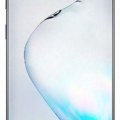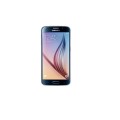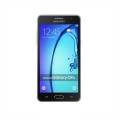- Home
- List of devices
- Samsung
- Samsung Galaxy Grand 2
Samsung Galaxy Grand 2



-
CPU:
-
RAM:
-
Storage:
-
Display:
-
Camera:
-
OS:
The GALAXY GRAND 2 offers maximum screen space on a slim, fully loaded smartphone for a performance-rich experience. With Dual SIM capability, you can switch seamlessly between networks and enjoy work-life balance. Enjoy your videos and games on a huge, vivid display and multitask comfortably with the Enhanced Multi Window. Meanwhile, Enhanced Camera features like Sound & Shot and smart services like Group Play enhance your interaction with the people around you. Equipped with a 1.2GHz Quad Core processor and the latest Bluetooth® 4.0, GALAXY GRAND 2 delivers ultimate power and connectivity.
Dual SIM Always On enables simultaneous 3G data and calls, helps maintain an ideal work-life balance, and offers a choice of pricing plans.
Slimmer with comfortable grip and extremely portable, the GALAXY GRAND 2 now comes with an expansive 5.25″ HD screen with 16:9 aspect ratio which is ideal for watching movies and playing games.
Outfitted with Android™ 4.3 (Jelly Bean), the GALAXY GRAND 2 is responsive with fast transitions and allows effortless switching between home screens and applications.
The Enhanced Multi Window does more than just allowing you to open and view two different applications at the same time on your screen. By using the ‘Drag & Drop’ mode, you can drag and drop text or images easily from one window to the other in an instant for enhanced productivity across different applications. What’s more, you can also open the same application in two windows at the same time: read the news in one browser while searching in another, or chat with two different people on ChatON.
The GALAXY GRAND 2’s fast 1.2GHz Quad Core CPU allows seamless multitasking, faster webpage loading and plays videos smoothly. Its long lasting 2,600mAh battery plays up to 10 hours of video. It also comes with GPS and GLONASS that offers faster and more accurate location detection.
Capture all the fun in a brand new way with Enriched Camera Features. Record sounds to your pictures with Sound & Shot and savour a whole new experience. Best Photo never misses a smile or mistakenly captures someone when they are blinking by taking a burst of 8 shots and choosing the best image for you.
Specs
General
| Announced | 01 November, 2013 |
| Released | 01 January, 2014 |
| Status | Available |
Display
| Display Type <strong>Display Technology => </strong> A number of display technologies and types used in mobile phones => TFT (Thin Film Transistor), IPS (In-Place Switching), OLED (Organic Light Emitting Diode), AMOLED (Active-Matrix Organic Light-Emitting Diode), Super AMOLED (an even advanced version of AMOLED), Resistive Touchscreen (Resistive touchscreens contain two layer of conductive material with a very small gap between them which acts as a resistance), Capacitive Touchsceen (Capacitive touchscreen technology consists of a layer of glass coated with a transparent conductor) | TFT |
| Size | 5.25 inches |
| Resolution | 720 x 1280 pixels |
| Pixel Density <strong>Pixel Density (PPI)</strong> is refers to the concentration of pixels on a particular display, measured in pixels per inch (ppi). Pixel density is calculated by dividing the diagonal pixel resolution of a display by its diagonal size, higher pixel density better display quality. | 280 ppi |
| Features | Capacitive touchscreen |
Hardware
| Chipset <strong>Chipset</strong> is a group of integrated circuits designed to perform one or a more dedicated functions, often with real time computing constraints, Popular smartphones are equipped with more advanced embedded chipsets that can do many different tasks depending on their programming. | Qualcomm MSM8226 Snapdragon 400 |
| CPU <strong>CPU</strong> (Central Processing Unit) mostly known as processors, CPU processes instructions in order to carry out certain functions that make your device operate properly. Processors are often described as the brain of computers, smartphones and tablets, Smartphones and tablets rely on processors to carry out their every task, Processors are an incredibly important factor in selecting any type of computing device, including your smartphone. | Quad-core 1.2 GHz Cortex-A7 |
| GPU <strong>GPU</strong> (Graphics Processing Unit) is a single-chip processor designed to rapidly manipulate and alter memory to accelerate the creation of images in a frame buffer intended for output to a display, This includes things such as lighting effects, object transformations, and 3D motion. | Adreno 305 |
| RAM (Memory) <strong>RAM</strong> (Random Access Memory) is a type of computer memory that can be accessed randomly, any byte of memory can be accessed without touching the preceding bytes that allows information to be stored and accessed quickly from random locations. RAM is the most common type of memory found in computer systems, smartphones, tablets and other electronic devices. | 1.5 GB |
| Internal Storage <strong>Internal Storage</strong> is a data storage space (flash memory) mostly used in smartphones, tablets and other electronic devices where operating system, apps, music, photos, videos, files and other user data Is stored. | 8 GB |
| Card Slot <strong>Memory Card Slot</strong> is a special slot for inserting a memory card. Memory cards allow you to expand the phone's built-in memory, A memory card (sometimes called a flash memory card or a storage card) is a small storage medium used to store data such as text, pictures, audio, and video, for use on small, portable or remote computing devices such as mobile phones, mp3 players, digital cameras. | Yes, microSD, up to 64 GB |
| Sensors <strong>Sensors</strong> are electronic components that detects and responds to some type of input from the physical environment. The specific input could be light, heat, motion, moisture, pressure and location, The output is generally a signal that is converted to use in computing systems, a location sensor, such as a GPS receiver is able to detect current location of your electronic device. | Accelerometer, proximity, compass |
Battery
| Battery Type <strong>Battery Type => </strong> Cell phones run on various kinds of batteries depending on the manufacturer, phone size or shape and features. There are basically four types of cell phone batteries => Lithium Polymer, Lithium Ion, Nickel Metal Hydride and Nickel Cadmium. | Li-Ion (Lithium Ion) |
| Capacity <strong>Battery Capacity</strong> is a measure (typically in Amp-hr) of the charge stored by the battery, and is determined by the mass of active material contained in the battery. The battery capacity represents the maximum amount of energy that can be extracted from the battery under certain conditions. | 2600 mAh |
| Standby <strong>Standby Time</strong> is the total amount of time that you can leave your is fully charged, turned on and ready to send and receive calls or data transmissions before completely discharging the battery. | Up to 370 hrs |
| Talk Time <strong>Talk Time</strong> is the longest time that a single battery charge will last when you are constantly talking on the phone under perfect conditions, Ambient temperature and highly dependent on the cellular network environment such as the distance to the closest cell network tower. | Up to 17 hrs |
Camera
| Primary <strong>Camera</strong> is able to capture photographs and usually videos, The most important characteristics of a camera are the resolution (measured in megapixels), lens focus type (fixed or automatic), higher megapixel cameras are known to capture higher quality photos, but not always a good measurement of the photos quality. | 8 mega pixels |
| Camera Features | Auto focus, Geo-tagging, touch focus, face and smile detection, image stabilization |
| Secondary | Yes, 1.9 MP |
| Image | 3264 x 2448 pixels |
| Video | Yes, 1080p@30fps, stereo sound recording |
| Flash <strong>Flash Light => </strong> There is commonly two types of flash lights are used in camera mobile phones, LED Flash (LED flash offers lower power consumption with drive circuitry that takes up very little room, LEDs can be strobed faster than any other light source), Xenon Flash (xenon flash produces an extremely intense full-spectrum white light for a very short duration) | LED flash |
Design
| Type <strong>Design Type</strong> called form factor refers to a mobile phone's size, shape, and style as well as the layout and position of major components of phone. There are three major form factors seen in mobile phones => bar phones, folding phones and sliding phones. | Bar |
| Dimensions | 146.8 x 75.3 x 8.9 mm (5.78 x 2.96 x 0.35 in) |
| Weight | 163 g (5.75 oz) |
| Colors | Black, White, Pink |
Network
| SIM <strong>SIM</strong> (Subscriber Identity Module) is a small card that contains mobile network subscriber's account information. This allows the phone using the card to attach to a mobile network. The SIM card is most commonly associated with GSM and UMTS mobile networks. Moving a SIM card from one phone to another allows a subscriber to switch mobile phones without having to contact their mobile network carrier. SIM cards can also be used by a phone to store limited amounts of data, such as phone numbers and text messages. | Micro SIM |
| Dual SIM | Yes, SM-G7102 (dual stand-by) |
| 2G Network | GSM 850 / 900 / 1800 / 1900 - all models |
| 3G Network | HSDPA 850 / 900 / 1900 / 2100 |
| 4G Network | LTE 800 / 900 / 1800 / 2600 - SM-G7105 |
Software
| Operating System <strong>OS => </strong> Every computer system run on a base software called Operating System (OS). Operating System controls all basic operations of the computer (such as smartphone, PDAs, tablet computers and other handheld devices). The Operating System allows the user to install and run third party applications (apps), apps are used to add new functionality to the device. | Android v4.3 (Jelly Bean), upgradable to v4.4.2 (KitKat) |
| User Interface <strong>UI</strong> or user interface of a device is the look and feel of the on-screen menu system. How it works, its color scheme, how it responds to button presses, all of these things are part of the user interface. | TouchWiz |
Connectivity
| Bluetooth <strong>Bluetooth</strong> is a wireless communications technology for exchanging data between mobile phones, headsets, computers and other network devices over short distances without wires, Bluetooth technology was primarily designed to support simple wireless networking of personal consumer devices. | Yes, v4.0 with A2DP, EDR, LE |
| Infrared <strong>Infrared</strong> connectivity is an old wireless technology used to connect two electronic devices. It uses a beam of infrared light to transmit information and so requires direct line of sight and operates only at close range. | |
| Wi-fi <strong>Wi-Fi</strong> is a popular wireless networking technology using radio waves to provide high-speed network connections that allows devices to communicate without cords or cables, Wi-Fi is increasingly becoming the preferred mode of internet connectivity all over the world. | Wi-Fi 802.11 a/b/g/n/ac, dual-band, Wi-Fi Direct, DLNA |
| USB | Yes, microUSB v2.0 (MHL 2), USB On-the-go, USB Host |
| GPS <strong>GPS</strong> The Global Positioning System is a satellite-based radio navigation system, GPS permits users to determine their position, velocity and the time 24 hours a day, in all weather, anywhere in the world, In order to locate your position, your device or GPS receiver must have a clear view of the sky. | Yes, with A-GPS support and GLONASS |



